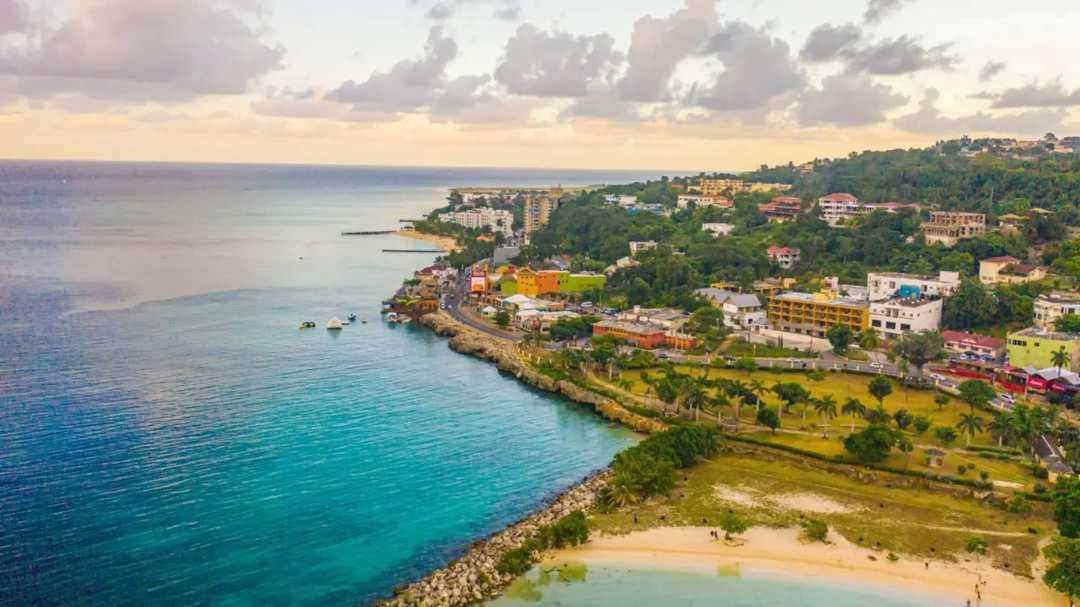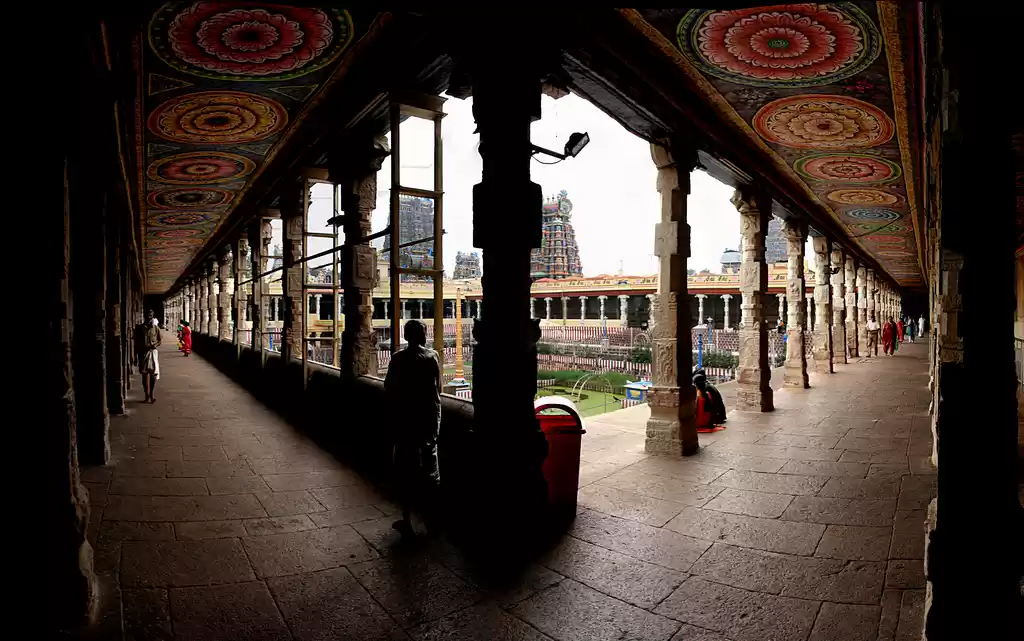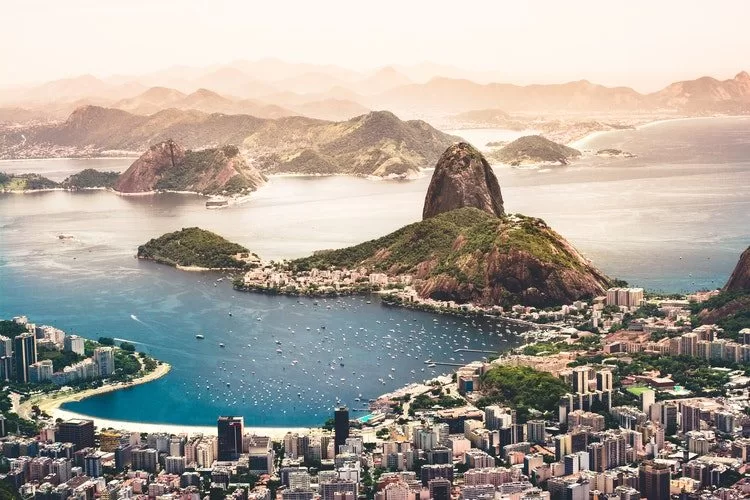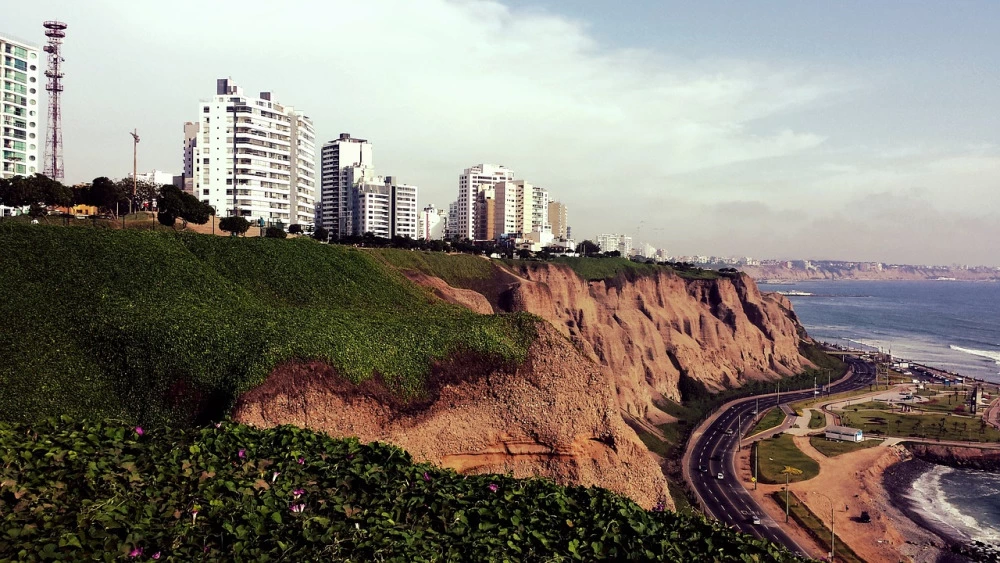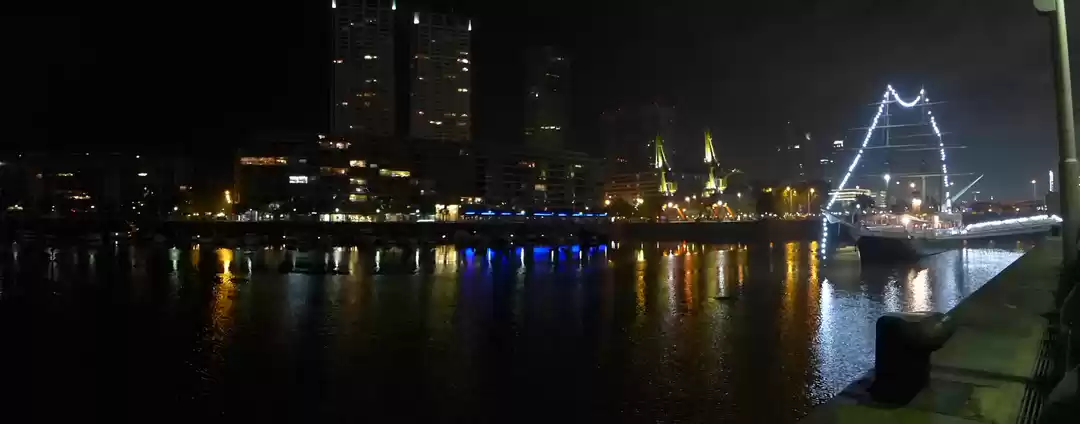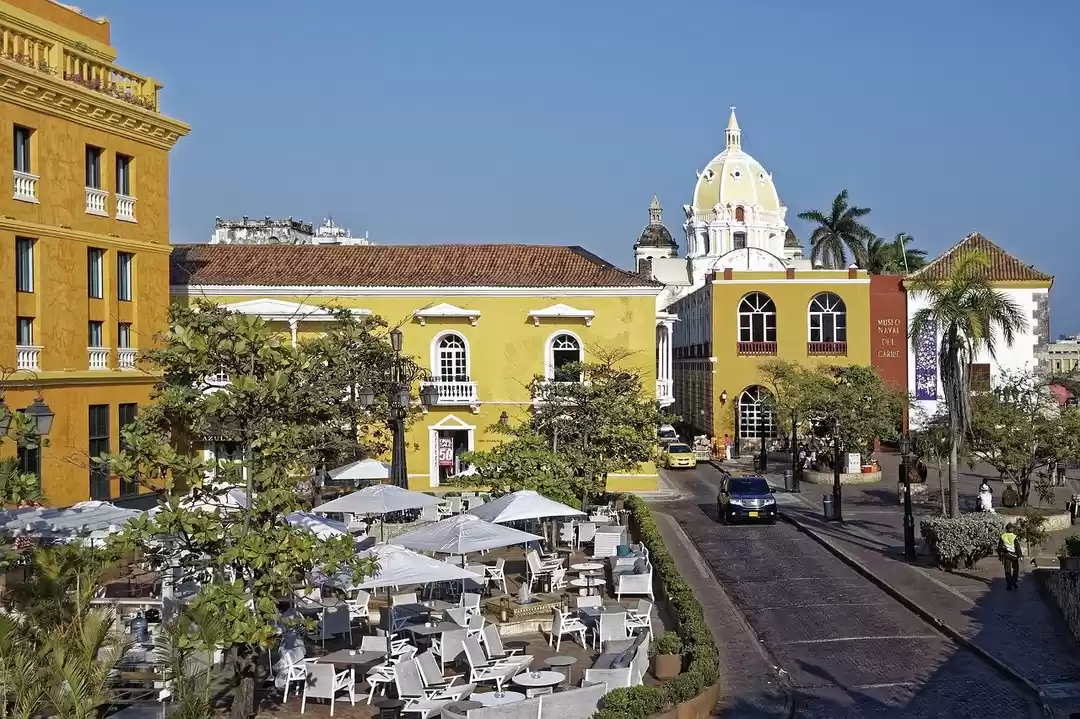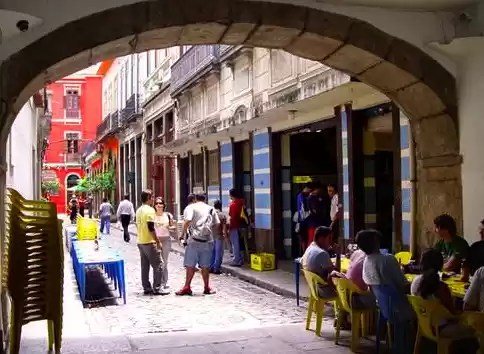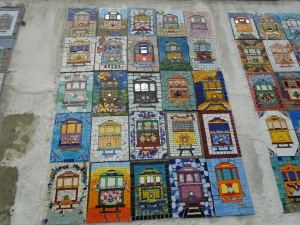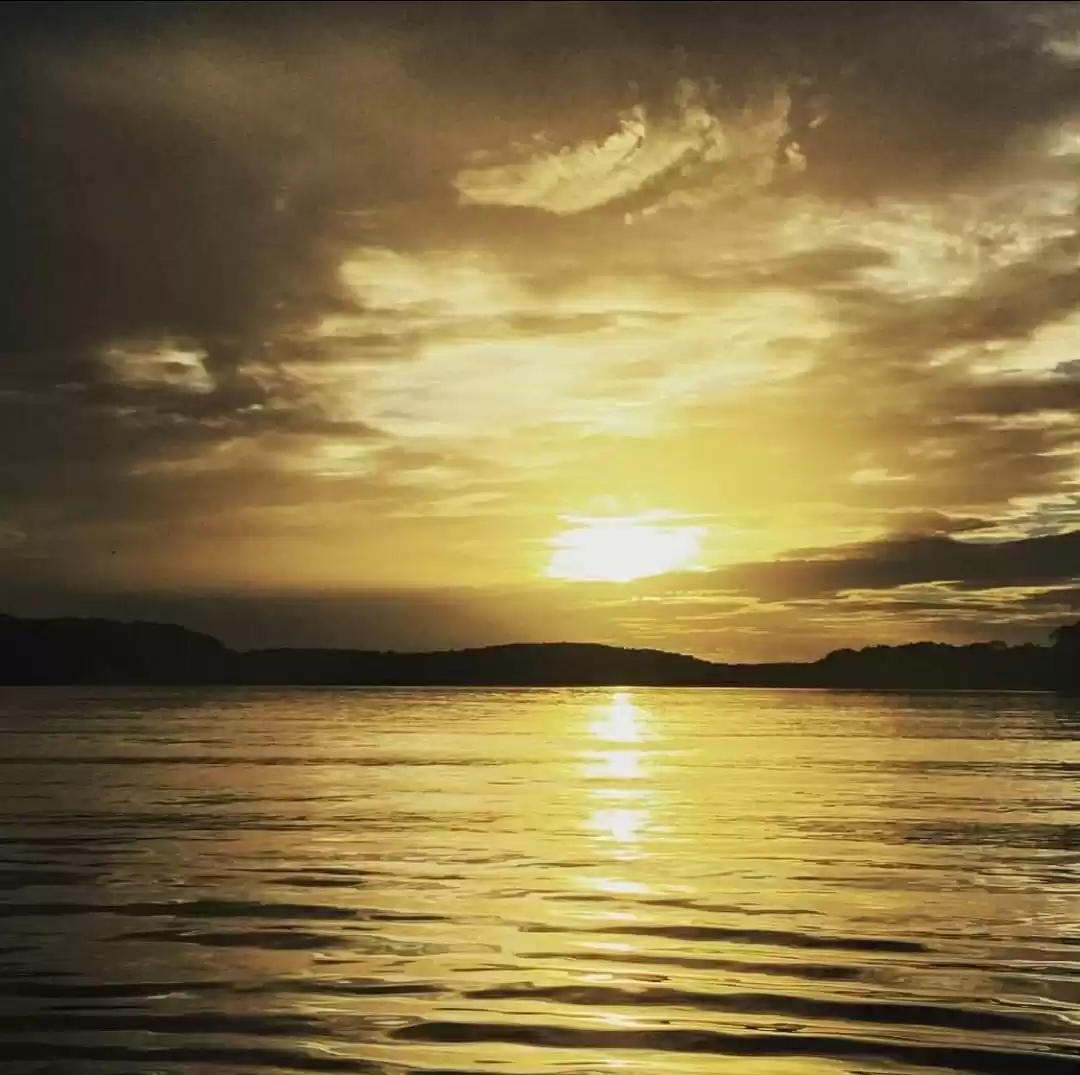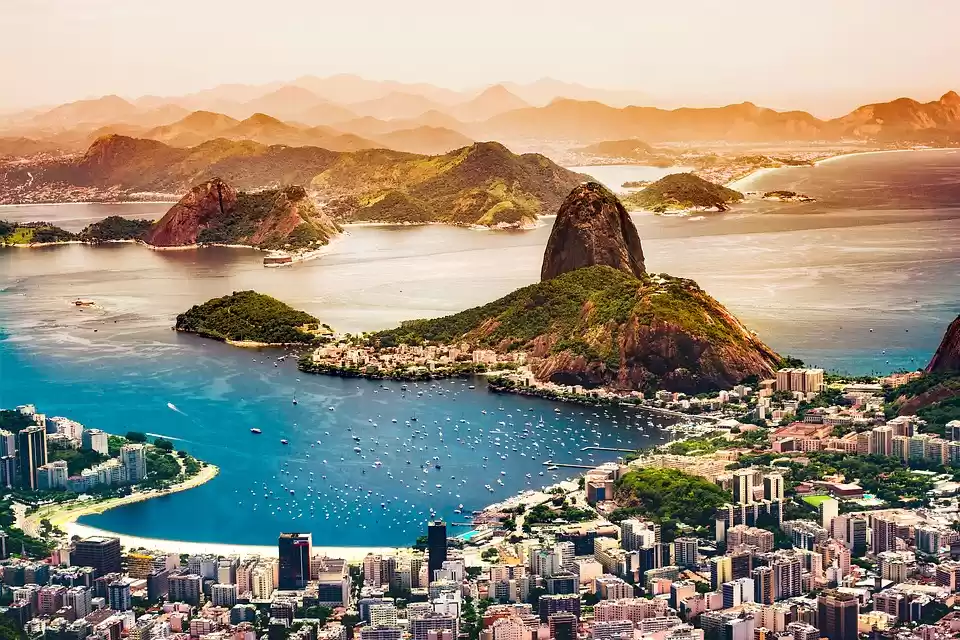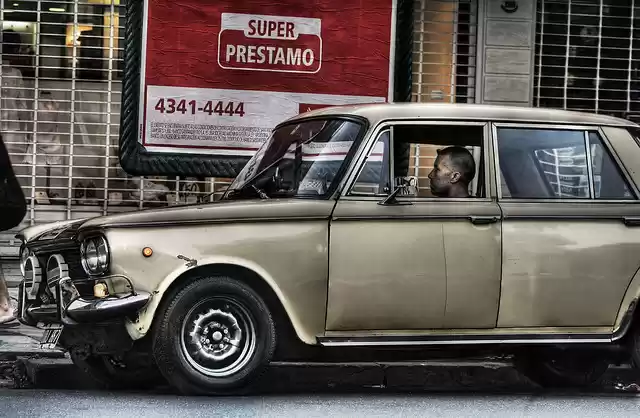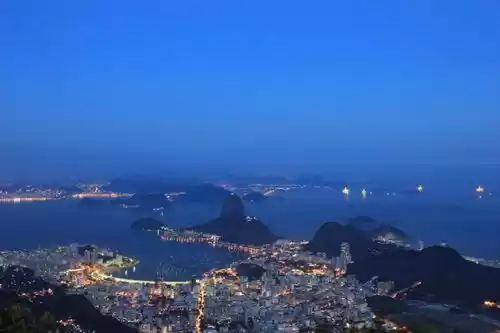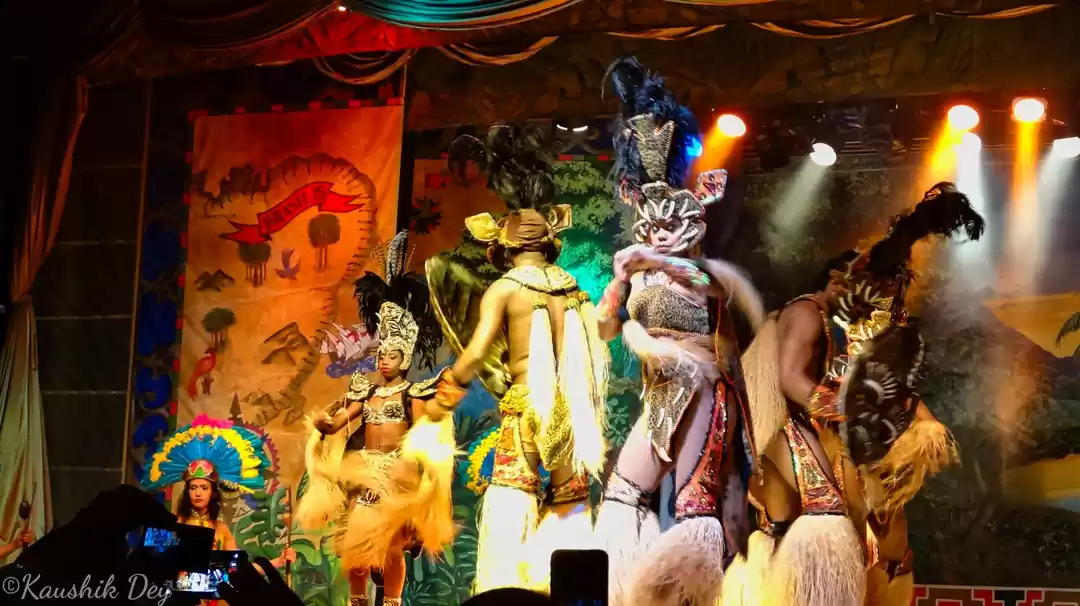
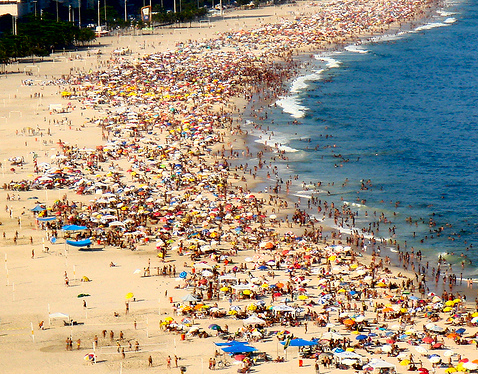
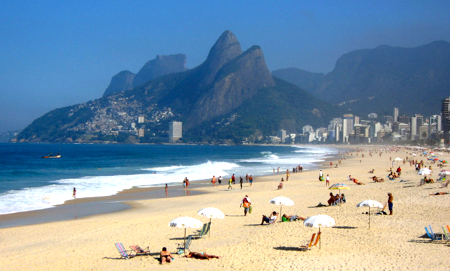







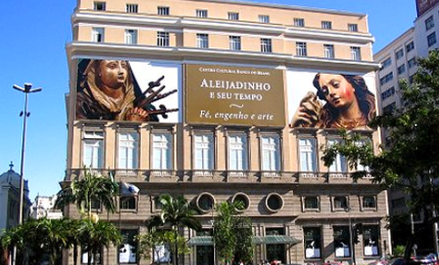

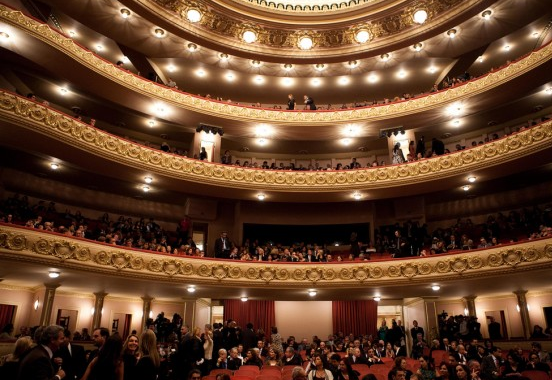

Rio de Janeiro is one of the most spectacular metropolises on earth. Rich in culture, nature, history and nightlife, Rio is a place people come back to again and again. It has some of the best music on the continent, the best scenery, the best beaches and, of course, one of the best climates. Not to mention the city's natives, who must rank as some of the friendliest people on earth.
Corcovado is one of the most recognizable monuments in the world. At 2230 feet, this hunchback mountain is crowned with the famous Christ Redeemer statue. By night, the 100 foot tall, 1,000 ton statue appears to float above the city like an angel, guarding Brazil's most famous and beloved city. The view from this perch surpasses the imagination, and many visitors are awed by the spectacle. Whether shrouded in mist, or spotlighted by the blazing sun, Corcovado is a spectacular site to visit and wonder at. Tours are available, and the tram to the top provides a casual but breathtaking experience. No trip to Rio would be complete without a trip to the top.

Copacabana is the most famous beach in the world. This spot has lost little of its mystique and charm over the years, as it is still one of the most visited place in Rio. The seascape blending into the cityscape, and the wonderful backdrop of mountains, makes for a uniquely ethereal experience visually. A sun seeker's paradise always, Copacabana, and its sister Ipanema, have come to symbolize the jet set mistique or Rio de Janeiro. Some say this is the best place to experience the carioca spirit, the essence of the city. Lined with restaurants, hotels, and surrounded by the vibrant night life of Rio, no visitor could possible avoid (even if they wanted to) this legendary spot.


This beautiful beach was made famous through a popular song: The Girl from Ipanema (Garota de Ipanema) by Antonio Carlos Jobim and Vinícius de Moraes. Ipanema Beach also has a very good location, near Copacabana Beach, but it is very distinct from its neighbor. The Ipanema beach features world-class restaurants, shops, and cafes and is one of the most expensive places to live in Rio.

Lagoa Rodrigo de Freitas is a beautiful lagoon in the Lagoa south zone of Rio de Janeiro, surrounded by Ipanema, Leblon, Gávea, Jardim Botânico, Copacabana, Botafogo, and Humaitá. Here you will find a Christmas Tree built over a floating platform that moves around the lagoon every season


Morro da Urca is one of the most popular destinations for scenic views and hiking. You'll find it near Morro Cara de Cão, beyond Botafogo beach. The 215 high Morro da Urca is also very popular among mountain climbers who enjoy the challenge of the sheer side of the hill. For less experienced hikers the best trail on Morro da Urca would be the one that goes up to the first cable car station of Sugarloaf.


Apart from being one of the best ways to get your bearings in Rio, a trip up the Sugar Loaf Mountain (Pâo de Açúcar) is also a way of enjoying some of the most spectacular views on earth. From time to time shows by major Brazilian artists are held on the Morro da Urca, where revellers can dance the night away and watch the city's lights glittering below them by night.

Located on a hill overlooking the city centre, Guanabara Bay and the Zona Norte, Santa Teresa is at once a window onto Rio and a neighborhood apart. Not only does it boast the only surviving tram network in the city but it also plays host to Rio's most vibrant artistic community. Ageing mansions and cobbled streets combine with the clatter and rattle of the 19th-century trams to lend Santa Teresa the air of a bygone age.

Tijuca National Park is the largest urban forest in the world. Tijuca is home to 30 waterfalls, hundreds of plant species, and over 100 animal species. This is a spectacular tourist attraction, offering a look into the natural beauty that once was all of Rio. Tijuca Peak, the second tallest in Rio, offers spectacular views of the city below, and the natural wonders around Rio de Janeiro. Any visitor simply must see this attraction

Real Gabinete Português de Leitura boasts over 350,000 volumes, including rare editions sch as the 1572 Luís de Camões's "Os Lusíadas." The library started forming in the 1830s, as Portuguese immigrants and political refugees founded a meeting point for the intelligentsia. The library spreads over three stories and it has a beautiful reading room.

Centro Cultural Banco do Brasil, or 'CCBB', as most people know it, contains an art gallery, three theatres and a cinema as well as an excellent bookshop and café. The centre is housed in a stunning domed building from the late 19th century and lays on regular art and dance festivals

Teatro Municipal was built in 1909, with a design not unlike that of the Paris Opera. Today, it is home to the city's orchestra, opera and ballet ensembles. The neoclassical style, all in marble, granite and bronze, makes the building one of the most beautiful in the city. Famous not only for the performances and its architecture, the house also hosts the Café do Teatro, one of the most famous such restaurants in the world. Catching a performance here is a transforming experience, which transports one to a more opulent and classical time. A great landmark and venue in the heart of Rio.




